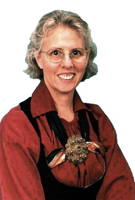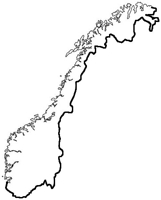
|
The Society of Folk Dance Historians (SFDH)
About Norway
[
Home |
About |
Encyclopedia | CLICK AN IMAGE TO ENLARGE |

|
The following list is from a series of observatios and answers to questions asked during my various trips to Norway. It was compiled and published in Folk Dance Scene in February 1990. Much of the that information is dated, but does reflect the time period. I have updated some of the information as of 2020 which are shown below in italics.
- Public transportation usually runs on time.
In the 21st Century, there is a toll to drive in to Oslo.
More recently, much of the parking has been deleted in Oslo to prohibit or really challenge those who do drive into the city. - People walk a lot in the cities.
- Norwegians put great value on nature and the out-of-doors.
- There are no really poor people in Norway.
- Children begin school at age seven.
- English language study is compulsory.
- The weeks on the Norwegian calendar are numbered.
- The week begins with Monday on a Norwegian calendar.
- Norwegians talk more quietly than Americans.
This is changing some with younger people. - The checkers in the markets get to sit down.
- People bag their own groceries and pay for the plastic bags.
- Tax is included in the price of an iten rather than tacked on later, as we do here.
- Gratuities are also included in the price, though it is not uncommon to leave a little more on the table.
Now more common. - Many sleep with the wall vent open to the outside so that te air will be fresh.
- The beds are narrower than in the USA, and do not have heavy blankets.
They use winter weight and summer weight comforters.
A double bed was two beds pushed together and each person had their own comforter. Not sharing one comforter as in the USA. - Norwegian sweaters usually have a new annual design.
- The sweaters available in the stores are usually for tourists.
- Most Norwegian women knit their own sweaters and those for special friends.
- There are two main languages used in Norway: Bokmal and Nynorsk. Bokmal is the Dano-Norwegian city language. Nynorsk is the 20th century language based on the regional dialects. Many food products have labels in both languages.
Now the Sami language is also considered to be one of the three main languages.
COSTUMES - FOLK CLOTHING
What is a bunad?
A bunad is generally considered dress up clothing representing a period of time. There are also less -formal versions in some areas.
- Often, there are special children's costumes that are less elaborate than the "bunads" (folk costumes).
- Many young adults either make or receive their "bunads" for their confirmation when they are around fourteen years old.
- Many Norwegians wear their "bunads" for confirmation.
- On the 17th of May, Norwegian Constitution Day, there are many parades and parties. It is one day when many people wear their "bunads." This practice has carried over to America where one can see many Norwegian costumes and parades in the Norwegian-American communities.
- Earrings are not worn with a "bunad."
- Bunads are for both men and women.
- Bunads are worn for dancing in the competitions, and very often are associated with the folk dance/music milieu.
- A bunad can be worn for a dress up event.
FOOD
- The coffee is rich and strong. So is the tea.
- Potatoes are an essential part of the Norwegian diet. It just isn't dinner without them.
- Fish is a very common part of the diet.
- Just like in America, there are regional specialties.
- Most bread in Norway comes unsliced. It is sliced as it is used as it stays fresher that way. I think they find it strange that almost all of our bread is pre-sliced!
DANCE AND MUSIC
- Folk dance classes have a fiddler to play for the class. They do not dance to recorded music.
- Folk dance parties of any kind have a fiddler or band to play for the event.
- At weddings, in the old days, the fiddler or fiddlers were expected to play almost non-stop and come up with new tunes for each wedding. The weddings in those days often lasted for three days! Folk music was not un-common at funerals too.
Now one can find folk music at some Sunday services. - The foot tapping of the fiddler is an essential part of the music. It is the rhythm section.
- People are quiet when teaching is going on. If the teacher has to ask for attention, people quiet down immediately.
- Most Norwegians who dance the "bygdedans" (regional/village dances) only do the dances from their own area or that of their family's origin. They tend not to learn more than one regional traditional dance. The rhythms are so special, unique, and difficult, that accompanying more than one tradition is not considered possible.
This has changed some in the last twenty or so years. - The "gammaldans" (old time couple dances) are more uniform in style and most people at least know how to do these dances. At many functions, one finds "gammaldans."
- An evening of "gammaldans" means doing the Waltz, the Polka, the Schottische, the Mazurka, and sometimes the Pols, for the entire evening. Usually, one will dance with the same partner for between two to four dances before changing partners. One thanks one's partner at the end of their dancing rather than at the end of each dance.
One does not say thank you after each dance. Typically, one talks about how nice it is to dance rather than thanking them. A thank you CAN mean I don’t want to dance with you again . . . - During a dance evening, be it class or party, there is usually a coffee break part way through the evening. It is a nice opportunity to socialize. It varies as to whether or not one brings one's own coffee or tea and cake, or whether it is provided.
- There are many meeting houses or community houses around Norway that are built with a large room with a wooden floor and a stage at one end. Many of the dances are held in these places.
- The dance floors are kept well waxed and it is very easy to turn on the floors. Sometimes, they are so well waxed that they are hard to walk on with a normal stride.
- The Hardanger fiddle is traditionally a solo instrument.
- Dance classes are usually held during the school year, especially in the autumn.
- Summertime is a time for holidays and special competitions. One can find the opportunity to join in the dancing in the evenings after the competitions. Often, the dancing is hale in the small houses of the open air folk museums where the rooms are very crowded and lit only by candlelight.
- Swing and Square Dancing are becoming popular in Norway.
Note the time period. Square dance is often to recorded music. Likely the same for swing dance. - One can go to the folk museum in Bygdoy in Oslo in the summer and dance outdoors, weather permitting. Usually, the dance is an evening of "gammaldans." It is hosted each week by a different dance group, so the musicians and exact flavor varies from week to week.
- Scandinavian dancing, including Norwegian, can be found in many communities in America. Check the Nordiska News for specific information.
DOCUMENTS
- Choreogeography: Scandinavia, an article.
- Historical Notes on the Norwegian Rørospols, an article.
- Norway, a country.
- Norwegian Dance, an article.
- Norwegian Folk Dances, a country.
Used with permission of the author.
Printed in Folk Dance Scene, February 1990. Revised 2020.
This page © 2018 by Ron Houston.
Please do not copy any part of this page without including this copyright notice.
Please do not copy small portions out of context.
Please do not copy large portions without permission from Ron Houston.
